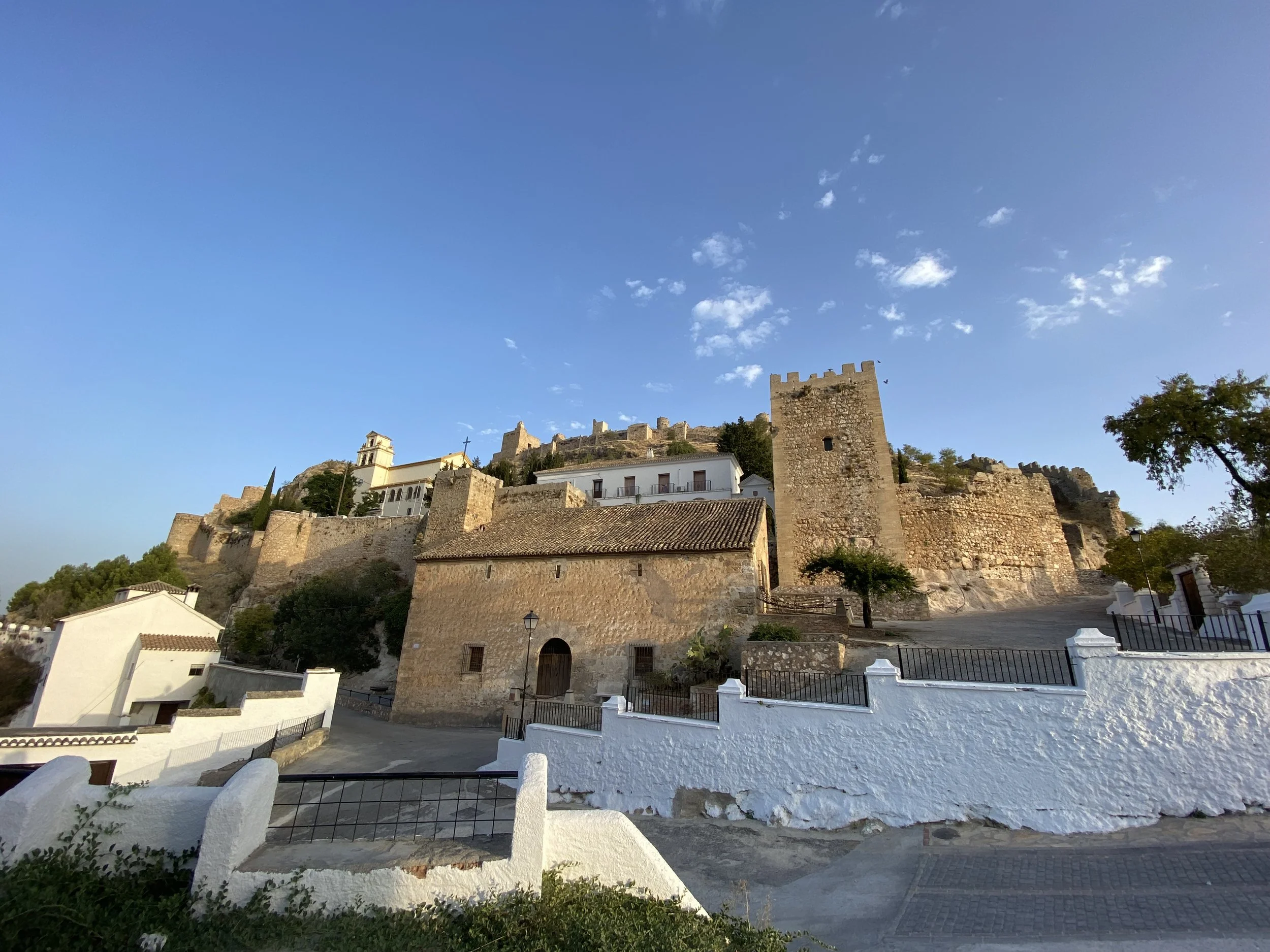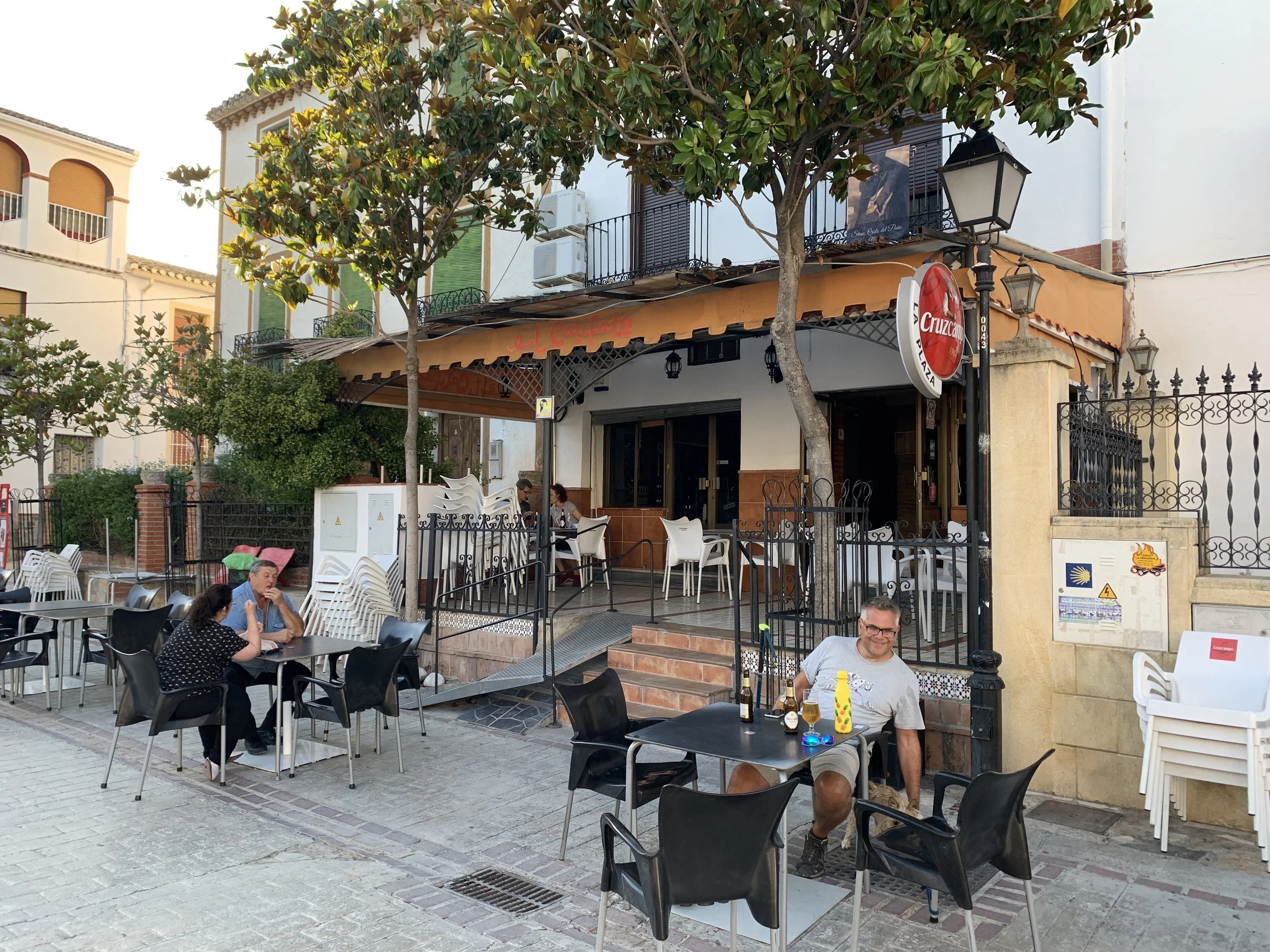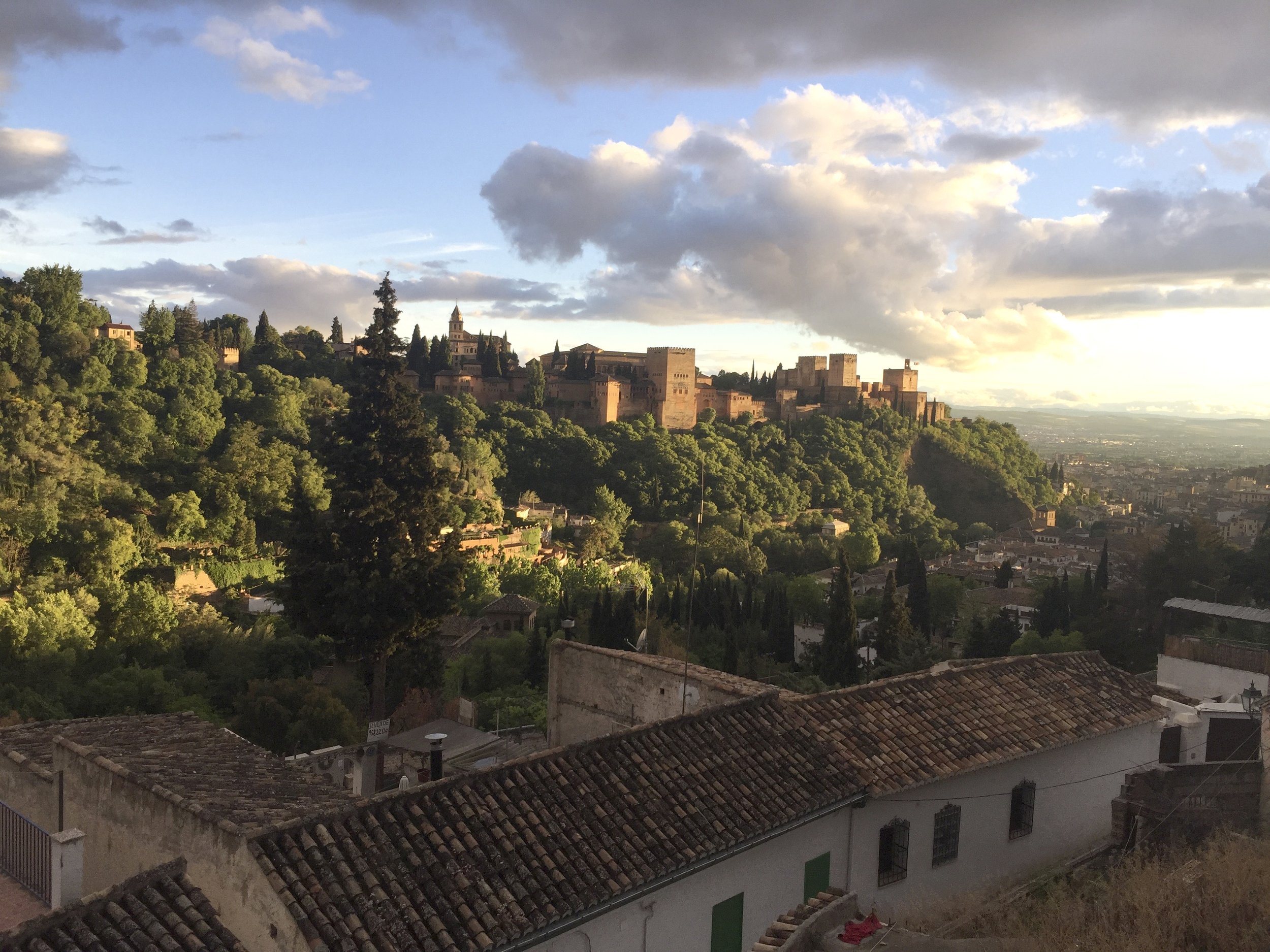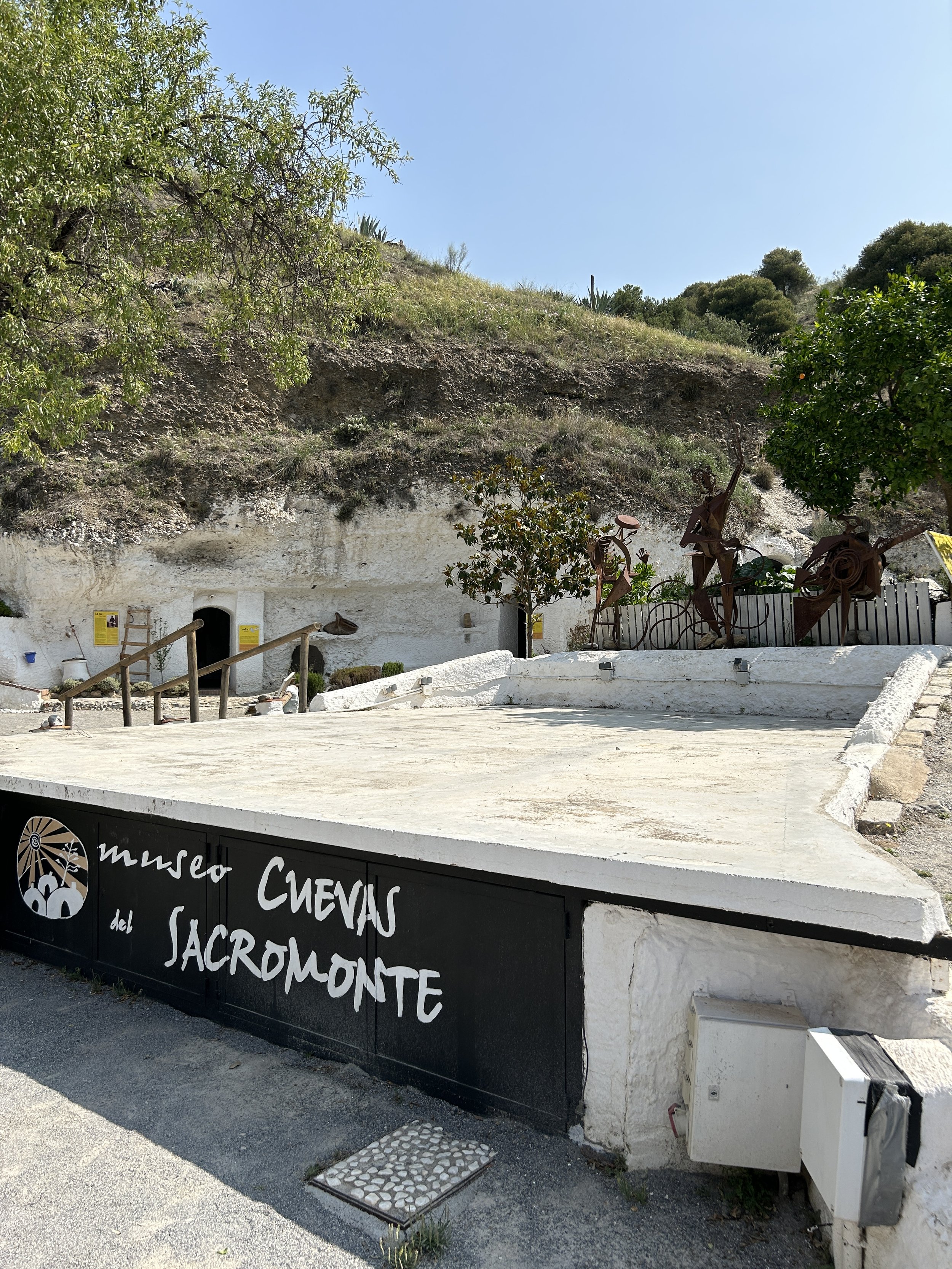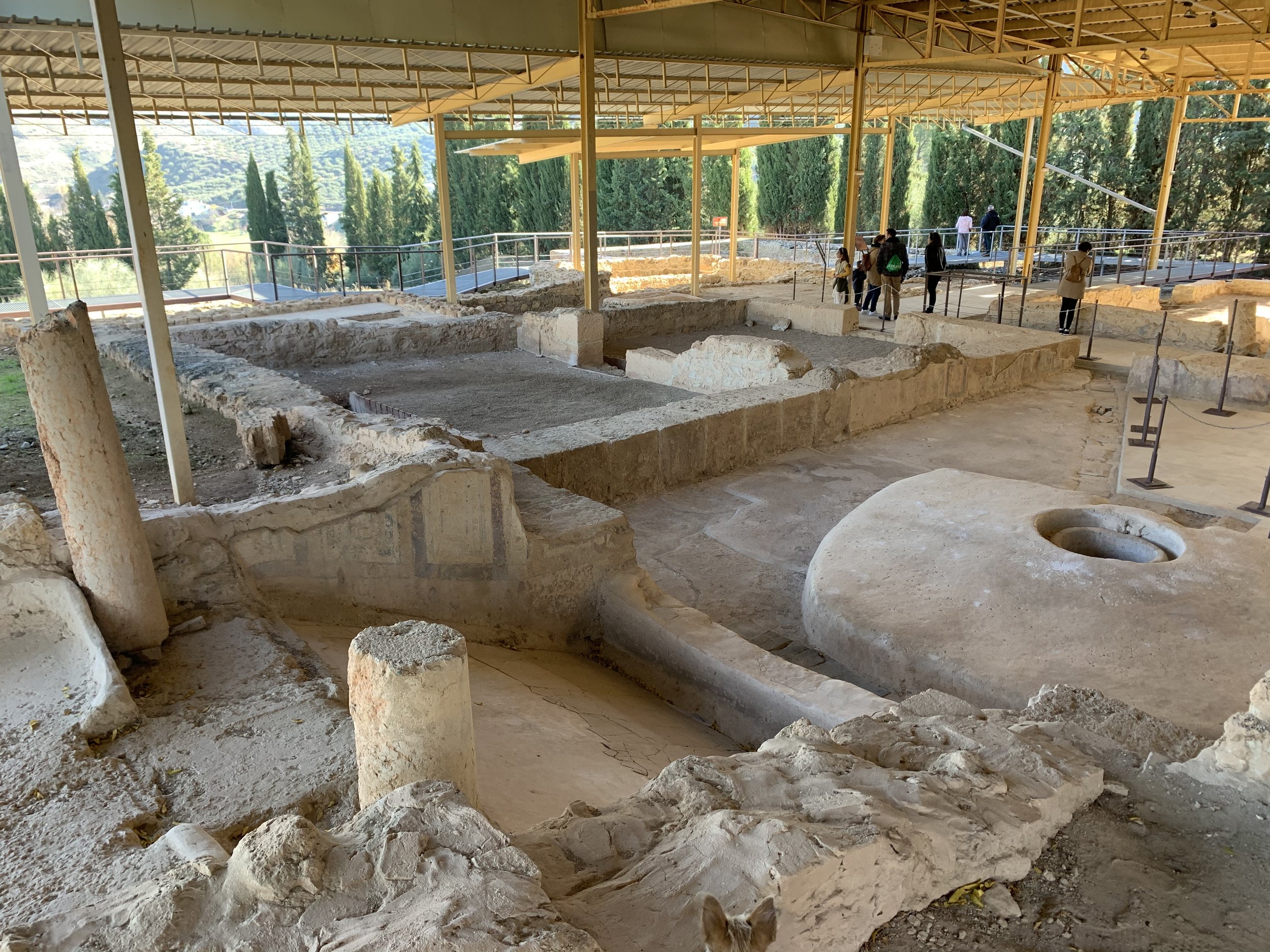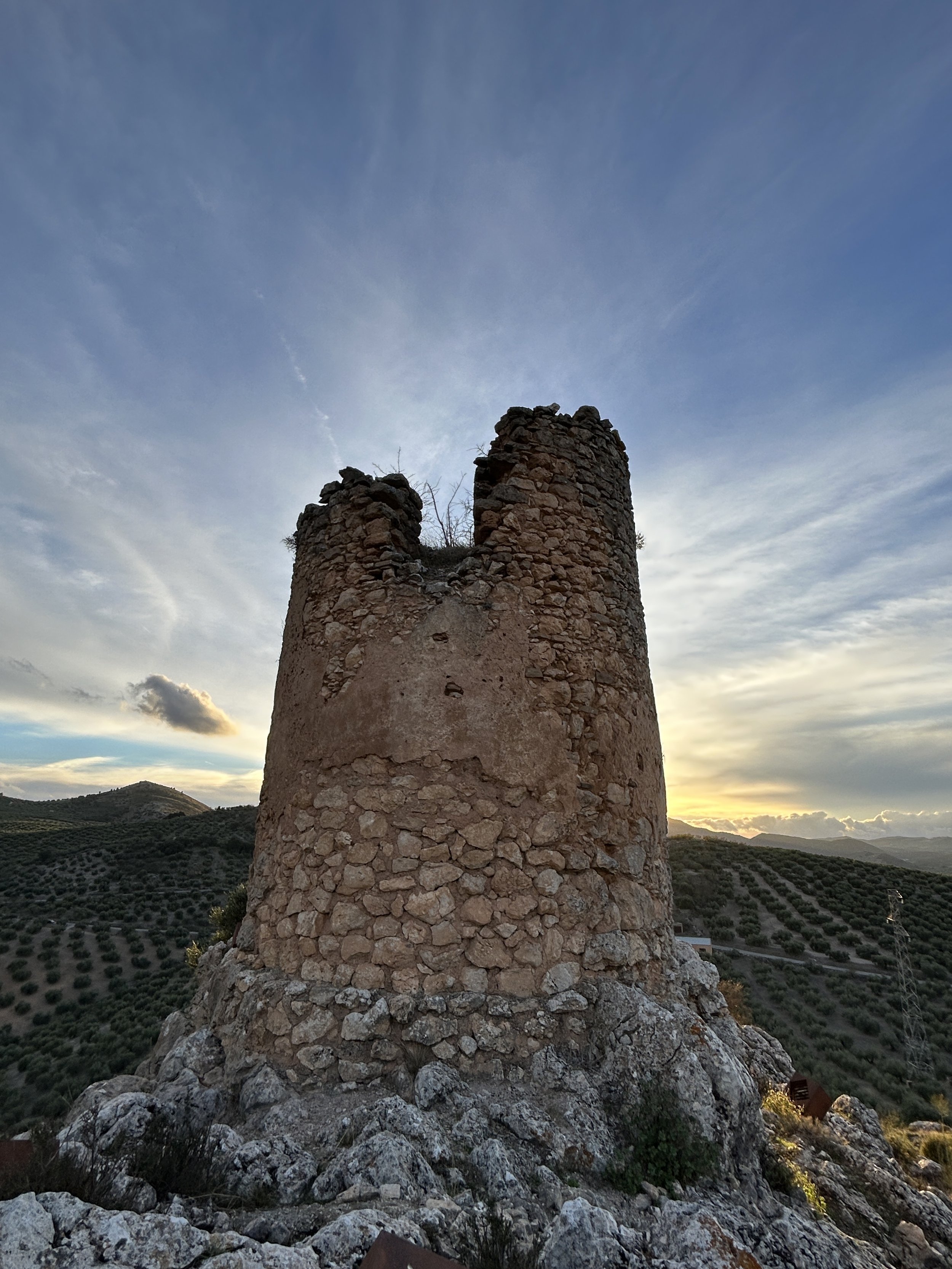7 Days in Moclín
Since we opened Esperanza 9 in June we have had a full season of guests and, as a result, we found ourselves giving lots of recommendations for things to do and places to see. It seems sensible, therefore, to catalogue some of those recommendations so that any visitor to Moclín can get the very best out of their stay.
Many of the activities or sites listed here are not always easy to find and some are within reasonable driving distance but are well worth including in any travel itinerary. The idea behind this guide is to ensure that travellers to the area don’t miss anything that is of specific interest and then live to regret it! Mind you, you will always be welcome to return.
To help accurately locate our suggested destinations we are using what3words mapping. Simply click the three word link beneath the location name.
DAY ONE
The village of Moclín and the immediate surrounds
Moclín is steeped in history and you only need to step out of the front door to find thousand-year reminders around every corner. In the land registry, the date of construction of many of the village properties is given as 1800 as this is when official records began, but many of these house are probably much older than that. Our own house has stones in the original walls that are the same as those used to construct the 13th Century Castillo de Moclín. What we would give to travel back in time, just for 5 minutes, to see what was here 700 years ago.
Spend your first day finding your way around the village (it’s not large!) and taking in the stunning views of the surrounding landscapes.
Moclín Castle
Location: ///thriving.extracted.oldie
Moclín is a breathtakingly beautiful village and is surprisingly little known, which is a travesty. Mind you, there are benefits to the village being a bit of a secret, so perhaps we shouldn’t broadcast its charms too widely! The Moorish castle sits on top of the mountain at an altitude of 1,100 metres and it is easy to understand why it was considered to be impregnable following its construction in the middle of the 13th Century; the word “perched” is very appropriate, and the 360 degree views are spectacular. The castle’s official name is the Fortaleza de las dos Pupilas (Hisn al Muklin in arabic, whence came the name Moclín), and it was under almost constant siege for 200 years from the time it was built until the Christians captured it in 1486. The castle then became the court for the Catholic Monarchs, Isabel and Fernando, for 6 years before they finally seized Granada.
The castle is not fully open to the public, but there are guided tours (in Spanish) on Saturdays and Sundays. Guests staying with us can request private tours of the castle, and sunset visits are well worth the effort of climbing the hill. We may even provide some refreshments!
Santuario Cristo del Paño (Iglesia Nuestra Señora de la Encarnación)
LOCATION: ///tarnish.tracers.informers
The church in Moclín sits below the castle and commands an impressive position, looking down on the properties that cascade down the hillside in a medieval jumble of walls and rooftops. Founded in 1501 following the arrival of the Christians, but on the site of the former Moorish Mezquita, parts of which are still in evidence, the church has undergone various modifications over time. In 1543 the main chapel was constructed by Diego de Siloé, and the most recent additions were added in 1940.
The Santuario houses the famous Cristo del Paño painting. This large canvas was a battle standard, given to the villagers of Moclín by Isabel and Fernando following their stay in the castle. The painting is believed to have miraculous properties: a man with cataracts touched the canvas and his sight was miraculously restored. It was from this miracle that the painting gained its name, Christ of the Cloth (Cataracts were known as Paño (cloth) disease in Spanish). In the 17th Century, a traditional Romería grew around this miracle and now the Festival of Cristo del Paño, held annually on 5th October, is one of the most important classical religious festivals in Andalucia. An average of 15,000 people descend on the village to pay homage to the painting.
Federico García Lorca referred to the Romeria in his play, ’Yerma’, and there are links to The pilgrimage of the cuckolds, a ballet by Gustavo Pittaluga based on a verbal argument by Lorca and Cipriano Rivas Cherif.
Have a drink and some tapas or lunch in the Bar in la Plaza, the square outside the Ayuntamiento. On a sunny day, it is a great place for watching the morning business activities and in the afternoon there will often be a stream of hikers or cyclists passing through, particularly at the weekends.
Bar La Plaza, Moclín
The Civil War Trenches
LOCATION: ///parting.authenticity.genius
If you have visited the castle and church in the morning, then a post-lunch walk might be worth it. An easy walk takes you to the Civil War trenches and the old millstone quarry below the castle and then out on the promontory for more spectacular views, particularly glorious as the sun starts to set.
DAY TWO
Ruta del Gollizno
Location: ///debased.evenly.strongman
Stay close to the village and hike the Ruta del Gollizno.
The Ruta is the area’s most well-known circular walk and it is beautiful, taking in so many variations in the landscape and throwing up endless vistas and deep-dives into prehistory. The route is 8 kms long but the height differential is 500 metres, so bear that in mind! Andrew describes the walk as moderately challenging and it is best avoided at midday in July and August!! Set out early or leave it until later in the afternoon (during the summer) and you will benefit from cooler temperatures and glorious light. Allowing for a coffee or lunch break and time to take lots of videos or photos, the route will take around 3 hours. There is the option to take the Tózar Variante, an additional stretch that runs to the neighbouring village of Tózar and back, but this will add an hour to the overall walk time.
For more detail about where to start and to watch a video we made of the walk, see our previous post Walking La Ruta Del Gollizno
If you have the energy later in the day, and fancy another walk, there is a beautiful short route that runs up the hill behind Kiosco Nono ///LOCATION, passing old threshing circles and a cannon marking the spot where the cannonball was fired that breeched the castle walls, and out towards a mirador (a stone view point) on the hill opposite the village. This is a great place to take the best photos of the village, and it’s a lovely spot for a little picnic or a glass of chilled beer while taking in the views over the Vega of Granada and towards the Sierra Nevada mountains.
There are many other hiking routes in the area, all of them beautiful, including a section of the Camino Mozarabe (part of the Camino de Santiago). For those people who feel particularly intrepid, there is a Via Ferrata network in the vicinity and we can put you in touch with the people who can assist you in a morning or afternoon of scaling cliff faces.
DAY THREE
Visit Granada and the Alhambra
LOCATION: ///beyond.terms.typist
Almost every guest who visits us from outside Spain wants to see the Alhambra in Granada, and it has to be on every travel itinerary. The Alhambra is Spain’s most visited monument and it is easy to build a whole day around the visit.
Please book tickets early, otherwise you will miss out, and our advice is to go for the general admission tickets for the Nasrid Palaces unless you specifically want a private guided tour. The official ticket website is https://www.alhambra-patronato.es. General tickets cost €19.09 (at the time of writing this post); private guided tours are available and cost considerably more.
View of the Alhambra from Sacromonte, Granada
Allow 2.5 - 3 hours for a visit to the Alhambra and be prepared for other visitors. The timed entry system for the Nasrid Palaces does prevent log-jams but we are certainly back to pre-pandemic levels of visitor numbers. In high seasons, aim to go for early morning or late afternoon visits to avoid the heat; the gardens leading to the Generalife (Summer Palace) provide lots of shade and the almost constant trickle of cooling water so enjoy a gentle stroll and seek out the quieter corners and breathe in the heady scent of roses and jasmine.
There is so much to see and enjoy in the Alhambra that it is almost impossible to take it all in in one visit. We have been many times and we still discover new corners.
There is plenty of parking at the Alhambra and a couple of good restaurants just beyond the grounds.
Carmen de Los Martires
LOCATION: ///bond.couple.speaker
If you do visit the Alhambra in the morning and still feel like a wander after lunch, a short walk down the hill will take you to the Carmen de los Martires. Behind the imposing gate and high walls there is a beautiful XIX Century palatial manor house and park-like garden that is free to enter and is one of Granada’s lesser-known secrets: a real oasis of calm and tranquility.
Eat at
Restaurante La Mimbre
LOCATION: ///gains.twilight.elbow
Restaurante Jardines Alberto.
LOCATION: ///tone.implore.pothole
DAY FOUR
Return to Granada
We suggest a second day for Granada, as a visit to the Alhambra doesn’t necessarily involve a visit to the city centre. Drivers are guided around the ring road, by-passing the city, and up the hill to the carparks for the Alhambra so it is easy to miss the city completely. This itinerary is just one suggestion as there are SO many ways to pass level days in this compact, culturally rich and very lovely city. I always compare Granada to Cambridge (UK not US version) as it is small enough to walk around and it has an intimacy and character all of its own. It is also a University city so has plenty of hidden-away areas that have that studenty vibe to cater for the nearly 60,000 students here during term time.
This particular itinerary takes you to some of our favourite museums and historic buildings, allowing for a gentle stroll down what is arguably Granada’s prettiest street and taking in a bit of Flamenco!
Museo Cuevas del Sacromonte
LOCATION ///firmly.braced.speak
Park in the centre of town (Puerta Real is ideal) then we suggest getting a taxi to save your legs for later on. Head for the Museo Cuevas del Sacromonte in the heart of the traditional gypsy/Flamenco quarter of the city. Whenever we run our Flamenco course, we bring our guests here as it is a fascinating ethnographic site where caves are very much as they were left by their last inhabitants. There are videos and fixed displays that chart the history of flamenco and the movement of displaced refugees as they travelled through Asia and Europe to settle in Andalucia. The caves are also in a beautiful corner of the city, right at the edge before city becomes countryside, and there are spectacular views of the Alhambra.
Now, you can walk back into the centre of the city and get to visit some more beautiful places en route.
Casa del Chapiz
LOCATION ///weep.compounds.national
Carmen de la Victoria
LOCATION: ///stem.owls.shelter
Palacio de los Córdova
LOCATION: ///machine.showed.code
Three lovely places, close together and all well worth a visit. The Carmen de la Victoria is a real hidden gem, accessible via a locked gate and you have to ring the bell to gain entry. The property belongs to Granada University and there is a cafe on the upper terrace of the building. However, it is the garden that is the highlight here - a genuine delight and again with unsurpassable views of the Alhambra. On a hot day, spend some time here beneath the thick planted canopy, listening to the gentle tinkling of water in the fountains and gaze across to the magic palace on the hill.
Further down the hill, you might also want to pop into the Palacio de los Córdova, a 16th Century palace that now houses the Granada archives. The gardens are another delight and the patios often provide performance space during the Granada International Festival of Music and Dance.
Carrera del Darro and the Casa de Castril
LOCATION: ///droplet.symphony.chair
Continuing down the hill, you will saunter through the Paseo de los Tristes and into the Carrera del Darro, the prettiest street in Granada. There are remnants of Moorish bridges, beautiful old buildings and the Rio Darro running down one side. Dodge the taxis and tourist ‘train’ as you take a trip through history. If you have time, do go into the Museo Arqueológico y Etnológico de Granada in the Casa de Castril, not least because the building is gorgeous. A Renaissance style palace built in 1539 by a pupil of Diego de Siloé, the architect responsible for the church in Moclín.
There are many places to have lunch, but it might be worth trying Bodegas Castañeda as it is on the route! Great atmosphere and good tapas, but it does get very busy at peak times so expect to stand in the bar area. If you want a more substantial meal, then grab a table outside the restaurant.
If you want somewhere a little quieter, then walk a little further to St Germain, a lovely and very characterful wine bar adjacent to a great little square.
If you are not exhausted by the afternoon, you ought to visit the Cathedral and certainly the Capilla Real, the final resting place of Isabel and Fernando - do you see how we are trying to make connections with Moclín? Clever…
See some Flamenco
Location: ///sing.question.trim
Finally, get tickets to see a show at Casa Ana, a tablao Flamenco show in an intimate theatre just up from Plaza Nueva. There are very few venues for spontaneous flamenco, but there are several Flamenco venues with staged performances. We have found Casa Ana to be the best, with very good musicians and dancers and its own bar.
Other recommendations in Granada (by no means a definitive list!): Take a Tapas Tour with Gayle and Granada Tapas Tours; Visit the Museo Casa de los Tiros; if it happens to be raining, book a spa at the Hammam Al Andalus. The list of our 5 favourite tapas bars in Granada can be found on an earlier blog post.
EAT AT:
Bodega Casteñeda
LOCATION: //opposing.tanks.merchant
St Germain
LOCATION: ////stem.drain.decades
DAY FIVE
Cueva de Malalmuerzo and a Picnic
Location: (protected!)
There are many caves around Moclín, and 7 of them have neolithic cave paintings. One of the caves, long considered to be of a similar age, has turned up evidence of a much richer history. Archaeologists recently discovered two teeth that they have managed to date back 23,000 years and that have provided the oldest human genome. The teeth are the second oldest human remains to have been found in continental Europe.
The Cueva de Malalmuerzo is now securely locked, and archaeologists return every summer to continue work in the cave. However, it is possible to organise private tours of the cave with a local historian and we’d recommend this visit wholeheartedly for anyone with even the slimmest interest in history, archaeology and anthropology. There are several caverns in the cave complex, but the visit will only provide access to the first cavern, but it is fascinating and the area outside has a very mysterious atmosphere that I find hard to explain.
Combine this visit with a hike and a picnic to one of the other caves in the area to see one or more of the cave paintings.
Conjunto Arqueológico, Tózar
LOCATION: ///underscores.observatory.prominence
Continuing on this tour of history, take time to visit the archaeological site in Tózar.
It’s hard to believe that, up to 2014, this 1,000 m2 plot of land was farmed around a well-preserved collection of Civil War trenches. However, beneath the top soil archaeologists discovered 7,000 years of history.
There is a Mozarabe cemetery with 80 tombs carved out of the rock, and the remains of a Mozarabe village dating from the 9th - 11th Century, and complete with intact silos for storing water and food. In the middle of the site there is the Dólmen Pileta de la Zorra, a neolithic burial tomb. Visitors can walk through the gates and down the pathway leading past these incredible remains, through almond trees and looking out over the majestic landscapes that undoubtedly conceal many, many more secrets of the past.
In the summer, for some great food, have lunch or dinner at the nearby Chiringuito de Mures shielded from the heat of the day by an enormous vine growing over the terrace. Enjoy chargrilled meats and the most delicious Tomates Aliñados (Tomatoes from their smallholding, simply dressed and sprinkled with sea salt; they taste divine).
EAT AT:
Chiringuito de Mures
LOCATION: ///hydrant.electronic.village
El Rincon de Marcelo
LOCATION: ///complains.blossoms.photograph
DAY SIX
The Christians and The Romans
Fortaleza de la Mota - Alcalá la Real
LOCATION: ///hobbit.cats.veered
Having visited Moclín Castle and seen in the distance the headquarters of the Christian armies, it makes perfect sense to go and see the Fortaleza de la Mota in Alcalá la Real. Only 11 kms from Moclín, Alcalá is a bustling market town and the fortaleza sits on top of the hill surveying all that lies below. The castle has been well restored as a visitor destination, and the Catholic built church is architecturally very impressive. There is an audio tour and a dramatic information film that gets shown inside the church. Thereafter, take time to walk from location to location within the castle precincts with the audio guide as your companion.
Get a taxi or drive down into the centre of town for a lovely lunch at Rincon de Pepe. The menu invariably serves dishes using the freshest local ingredients: their asparagus is divine when in season!
Almedinilla
Villa Romana El Ruedo
LOCATION: ///sickle.paddy.shrunk
We had no expectations when we first visited this historic site, dating from I to VII Centuries. A visitor centre has been built, and the guide crosses the road with you, armed with a set of keys to open the gate in the wire fence. Then you enter the Villa and what a discovery it is! This is a large, almost palatial Roman Villa in which the room layout and designs are still very much in evidence - mosaic floors and frescoes on the walls. The triclineum where the family would recline, sup wine and nibble grapes almost invites you to join in!
Almedinilla is a lovely little town in its own right, but there is also another archaeological site with the remains of a village dating from the II - III Century and many very beautiful hiking routes.
If you are planning a longer stay in this region, try and pick up a copy of the National Geographic book on the Roman Route through Córdoba Province. The book is available in the visitor centre and museum in Almedinilla and connects the Villa El Ruedo with the other important Roman sites throughout the province.
Additional places to visit in the area: Montefrío and Priego de Córdoba.
EAT AT:
El Rincon de Pepe (Alcala la Real)
LOCATION: ///vampire.freedom.cocktail
Restaurante Los Cabañas (Almedanilla)
LOCATION: ///minty.affiliate.keen
DAY SEVEN
Horse riding, Colomera.
LOCATION: ///sightseeing.shrunken.uniform
Now, horse riding may not be everyone’s cup of tea, but it is something we would strongly recommend, even those with an uneasy relationship with our equine companions. I learned to ride when I was at school, many years ago, and in my mind I always love the idea of cantering across open plains. Get me near a horse and all my old doubts return. Until recently, Andrew had never been on a horse and whenever I suggested the idea as a jolly jape, it was met with a fairly firm “no”.
All that said, we got invited to go riding with a friend of ours this summer and before either of us could demur I said yes and put the date in our diaries. We had an amazing 2 hours, setting out with a small group of friends and took a gentle ride through olive groves as the sun started to set and, no matter what your experience of horses, we think you would love this experience.
The closest riding centre is in Colomera, in the neighbouring municipality, but routes cut across the olive groves towards Olivares and Moclín. José Edouardo has a lovely collection of horses for all sizes of rider and of all levels of experience. He listens carefully to match the best horse to each rider and at no time did I feel anything but confident, even when I was asked to mount the largest horse in the stables. This is always my problem as I am no physical lightweight, so tend to get matched with a giant on four legs.
Take a ride in the morning or afternoon and then you can spend the other half of the day delving into the history of Federico García Lorca, Granada’s most famous poet and playwright.
Have lunch in Rincon de Marcelo in Tózar before or after your ride. In summer, the large roof terrace affords amazing views over dramatic countryside towards the castle of Moclín; sunsets here are amazing!
Federico García Lorca - discover Lorca’s Route
There are several sites that make up the map of Lorca’s Granada but the five that we recommend are:
Fuente Vaqueros: the house in which Lorca was born
LOCATION: ///remarked.because.detours
Valderrubio: Lorca’s Family Home
LOCATION: ///tiny.weasels.ploy
Huerta de San Vicente: The Lorca Family’s country house
LOCATION: ///puzzle.blaze.prompts
Alfacar: the area in which Lorca was assassinated
LOCATION: ///grace.chills.projects
Moclín
LOCATION: ///participated.national.rulebook
The houses in Valderrubio, Fuente Vaqueros and Huerta de San Vicente are all well worth visiting as they are now open as museums furnished as they were when the family occupied them, and each with their own exhibitions of the life and times of the writer. The Universo Lorca website is a great resource and even if you are not familiar with Lorca’s work, his history is a vital and tragic piece in the jigsaw of Spain’s complex and bloody Civil War (1936 - 1939).
Lorca is celebrated and commemorated everywhere in Granada and every year there is a Lorca festival in the open air theatre in the gardens of the Generalife (the summer palace in the Alhambra). If you are visiting during August, do get tickets to go and see the show.
EAT AT:
Atalayas, Moclín
LOCATION (Atalaya Solana): ///igloo.banana.jigsaw
If you don’t fancy getting in the car to visit Lorca’s family homes, then take a walk up to one of the Torre Atalayas. These 14th Century watchtowers were built to provide early warning of any assaults by the Christian armies on Moclín Castle. The walks up to two of the towers are relatively easy and the views from the top of both are spectacular - wild, exciting and steeped in centuries of history.
Of course, you can choose to spend a week with us in Moclín on one of our Cultural and Creative course holidays and we can show you even more of the cultural highlights of this beautiful corner of Andalucia.
If you are visiting in Winter… GO SKIING!
The Sierra Nevada Ski Resort is only 1 hour away and there are facilites for all levels of skiing, some great ski schools, equipment hire and apres ski activities. See our previous blog post for more details.
If you are visiting in the Summer… spend a day at the BEACH!
In 50 minutes, driving from Moclín, you can be on the beach! There are so many to choose from but our favourite closest beach is Playa Granada. It’s not particularly beautiful but we love it for its lack of tourists and its great chiringuitos (beach bars).
If you are looking for something a little more lively, head to La Herradura and our favourite marina, Marina Del Este.
Eat at:
Badia Beach Club & Restaurant (Playa Granada)
LOCATION: ///auctions.hyping.unfunded
Restaurante Marina Playa (Marina Del Este)
LOCATION: ///slurping.outspend.interstate
Where to Stay
Of course we would recommend two places to stay in Moclín!
Esperanza 9
This is self catering accommodation for up to four adults. It has two double bedrooms and ensuite bathrooms, fully equipped kitchen, a roof terrace and a plunge pool. Minimum stay three nights.
www.esperanz9.com
Casa Higueras
This is a boutique Bed & Breakfast, two double rooms, large roof terrace and far reaching views. Breakfast included and a three course dinner can be requested.
www.casa-higueras.com



